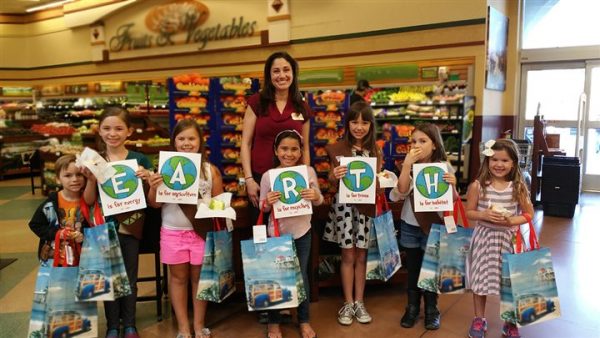Sustainable future: 6 ways to teach your kids about food waste
 America needs to address its food waste problem, and a good place to start is taking steps to teach our children to conserve food.
America needs to address its food waste problem, and a good place to start is taking steps to teach our children to conserve food.
Right now, a staggering 40 percent of all food in the U.S. goes to waste when restaurants, supermarkets and consumers throw it away, costing our national economy $1 trillion in the last two decades and needlessly destroying 10 percent of the earth’s wilderness, according to Newsweek. For the average American family, that translates into $1,500 yearly in wasted food.
Fortunately, educational and awareness campaigns sponsored by food-related businesses and others are helping children understand the scope of the problem and suggesting pathways toward a less wasteful future.
Many businesses don’t realize the huge role they can play in encouraging less-wasteful habits in their communities says Etienne Veber, president of Field Trip Factory, a firm that helps design, schedule and promote interactive learning experiences that teach the importance of sustainable practices and habits across our communities.
One of their most successful programs leverages best practices around sustainability and food waste within a grocery store to challenge students and their families to do the same in their schools and homes. “The more we encourage sustainable habits at the family level, the faster we can together reduce the amount of food that’s needlessly tossed out in the U.S. each day and be good stewards of our communities and our planet,” notes Myeisha Gamino, director of corporate affairs & government relations for Ralphs grocery stores.
Some ways you could teach your own students, children or community members to help:
* Involve your entire family or class in a six-week project during which they’re challenged to reduce family food waste by 25 percent. Encourage them to suggest their own ideas for making that happen, establishing a reward for those who achieve their goal — maybe a trip to a favorite restaurant or recreation destination.
* Support the free elementary-level educational program “Speak Out. It’s YOUR Earth!” this April. The one-hour guided experience co-sponsored by supermarket chain Kroger Co. invites students into Ralphs grocery stores throughout southern California to learn about sustainability, conservation and ideas for reducing, reusing and recycling food in their daily lives. At the end of each in-store experience, students and adults are challenged to apply the main concepts learned into their own lives, whether at home or at school. The program is supplemented by pre- and post-event curricular materials.
* Involve children in planning a week’s worth of family meals, explaining the process of choosing entrees, side dishes and desserts, shopping and paying for ingredients, preparing food and storing leftovers. That helps them understand the money, time, transportation and effort involved so they’re less likely to take it for granted.
* Volunteer together at a local food bank or soup kitchen to give children a better appreciation for the relative ease of their daily meals. Families or groups might also tour a working farm, visit a landfill center, plant and harvest a vegetable garden and/or create and use a compost heap.
* Be mindful about not overloading children’s plates unless they ask for large portions. Similarly, don’t pack items in their daily lunches you know they won’t eat; instead aim for that golden mean of healthy foods they’ll actually consume, and coach them to bring home uneaten items. Note: They may take more ownership if they pack their own lunches.
* When children can’t eat their entire meals at home or in restaurants, save the leftovers in airtight containers for them to eat the next time they get hungry.
As a nation, we’re engaged in several habits that lead to expensive, unsustainable and environmentally harmful food waste. But the future can be brighter if we begin now to teach our children how to do a better job using our food resources in their daily lives.
This year the “Speak Out. It’s YOUR Earth!” program is expected to reach 60,000 students in southern California. Ninety-seven percent of participating educators plan to attend again, and the average ranking for the program has been 4.5 of 5 stars. To sign up your students or start a similar program in your community, contact The Field Trip Factory.

